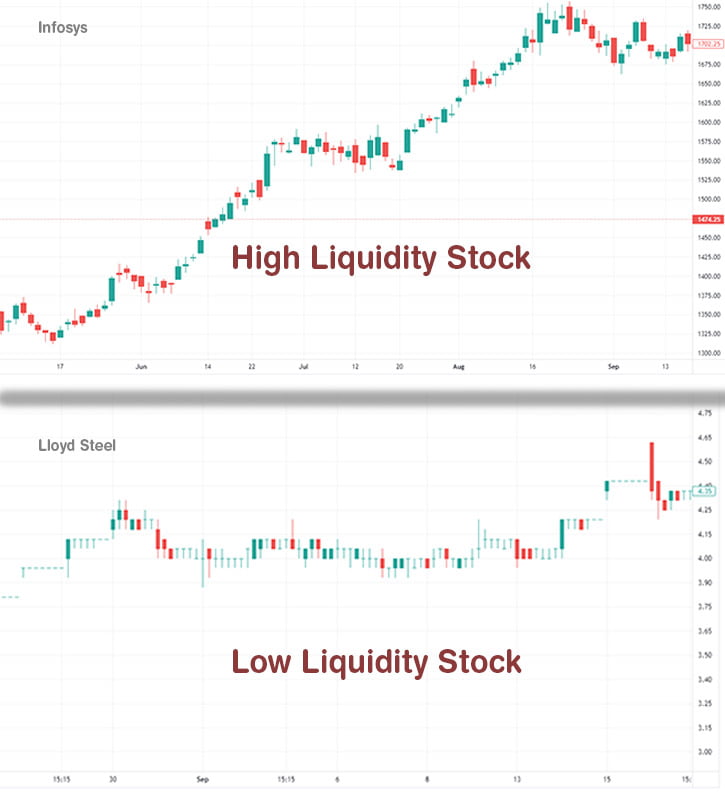Let us first understand what is liquidity
Suppose you have a property in Mumbai city and if you want to sell this property, is it easy to find buyers or will it be difficult in a city like Mumbai, where there is so much real estate competition? Selling any decent property there will not be a difficult task.

It is a matter of fact that now you have another property in your native village. Now tell me if you want to sell this property, is it easy to find buyers or that will be difficult? It will be difficult in comparison to the Mumbai property because there will be a lot of buyers for the Mumbai property and probably not as many buyers for the village property. So, How easily any investment can be bought and sold, is called the liquidity of that investment.
So in our example, we will say that Mumbai property has more liquidity and village property has less liquidity. Now the liquidity of each asset class is different. Well, Cash is king. Cash has the highest liquidity. After that comes the number of gold because buying and selling gold is not such a difficult task. Stocks have a little less liquidity than gold, followed by property, and the lowest liquidity is for a modern art type of asset. Think about it, is it easier to sell the gold lying in your house to a nearby jeweler? than to sell modern art lying in your house to someone. So it is a matter of how much liquidity is there in different asset classes.
what is the importance of liquidity
So the first thing we saw. When liquidity is high, it becomes easier to buy and sell investments. Secondly, due to liquidity, you can buy and sell any investment at a fair price. Thirdly. If you want to sell your asset, then the stress of finding buyers for it is less. So let’s see the same example: if you have gold, it is effortless to sell it, but if you have a property, then the stress of selling it will be more. And the biggest thing is that when you need cash, you can easily collect cash by selling a good liquid investment.

So let’s now talk about liquidity in the stock market
The stocks in which a lot of buyers and sellers are interested are called high liquidity stocks and the stocks in which few people are interested are called low liquidity stocks or also called penny stocks. But now a question comes how to find out the liquidity in stocks? Now it is a bit surprising that liquidity is such an important concept, but still, there is no official measurement of it so just by looking at it, we can’t say that yes, there is more liquidity in this stock or there is less liquidity in that stock. For this, we need some practical knowledge and experience. So let me tell you from my knowledge and experience how can we find out the liquidity in stocks. The first way to find out liquidity is by looking at the market capitalization of a stock. Market capitalization means the total market value of the company, which basically tells you how big the company is. If we take the example of IndusInd Bank which is a small bank, its market capitalization will be much less than that of a big company like Reliance.
Also read: Mastering The Stock Market In An Era Of Volatile Interest Rates
So the basic thumb rule is that the bigger the market capitalization of the company, the higher the liquidity in its stock, then the large-cap stocks have the highest liquidity. You will get maximum liquidity in stocks like Reliance, TCS, L&T, HDFC Bank, etc. That means you will not have any problem buying and selling their shares. Now talking about midcaps, their liquidity is less in comparison to large-cap stocks. But they also have a range. There are many midcap stocks which have good liquidity and there are also many midcap stocks where the liquidity is very less. Then if we talk about some mid-cap stocks, where the liquidity is quite decent, they are like Mindtree, Apollo Hospitals, and Indian Bank.

Now talking about smallcap stocks, they have the least liquidity. Stocks like South Indian Bank, Jagran Prakashan, Chennai Petroleum, etc. These small-cap stocks also have a subcategory of stocks, which are called micro-cap stocks or penny stocks, and these stocks have the worst liquidity. And that is why many people get trapped in these stocks. When the market is going up then these micro-cap stocks run very fast and investors also put a lot of money in these multi-baggers, in fact, many people also make money out of it. But when the market starts falling, buyers are not available in these stocks i.e. the liquidity decreases a lot and due to this, these stocks also fall very fast.
Now if we take an old example, microcap stocks ran very well in 2017 but when the 2018 crash came, these stocks fell 50%, 60%, and even 90% from top to bottom. And all this is because buyers are not available in these stocks. In comparison, if you notice the correction of large-cap stocks, they fell about 20-30 percent. That’s why my advice is that you should stay away from micro-cap stocks and if you want to invest in them then you go through mutual funds, which are safer.
Another practical method to measure liquidity is by checking the spreads of the stocks, the spreads mean the difference between bids and asks, i.e. at what price are buyers ready to buy, and at what price are sellers ready to sell?

As you can see in both these stocks that higher liquidity stocks have lower spreads and lower liquidity stocks have wider spreads. And you can easily check these spreads from any broker’s platform like Zerodha, Upstox, ShareKhan, etc. The third and more visual way to check liquidity is by viewing the intraday chart of the stocks. The price on the chart of higher liquidity stocks is as good as water. That is, you will not get any price breaks, as you can see in Infosys stock.

Now compare this chart with the chart of a smallcap company where the candle sticks are not clear or no candle stick formed for hours, that is because the buyers are so few in this stock. Prices in such stocks tend to falter instead of flowing smoothly. The fourth and very important way to analyze liquidity is by considering the instrument you want to trade like Equity Cash, Futures, and Options. Here the equity or cash segment has the highest liquidity. In comparison, futures have low liquidity and options have the least liquidity. Now there are a lot of variations in futures and options also. If you look at the features of a company like Nifty Bank, Nifty or TCS, and Reliance then you will get a lot of liquidity there but apart from these, you will get very less liquidity in futures and options of many different stocks. So my advice is that before trading, you must check that stock liquidity.
In this blog, we’ve learned about What is Liquidity? What is the importance of liquidity in the stock market and how to check liquidity? in any stock? I hope you have understood this concept very well. If you have any queries, you can write in the comment section below. Thank you for staying connected with us.

1 thought on “What is liquidity and what is its importance in the stock market?”